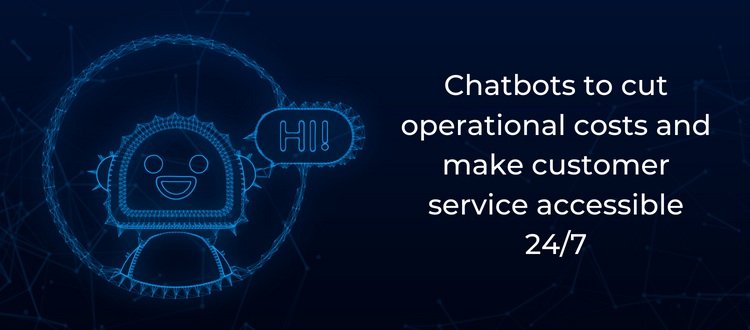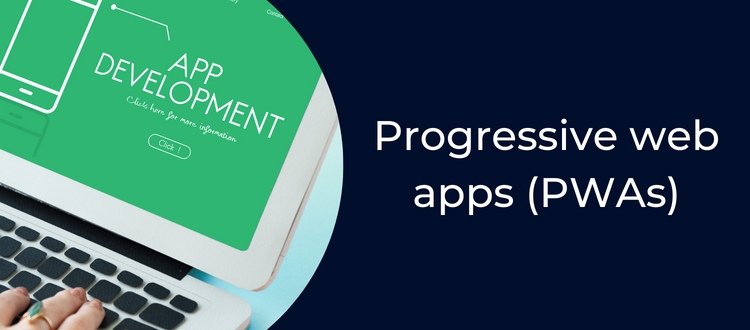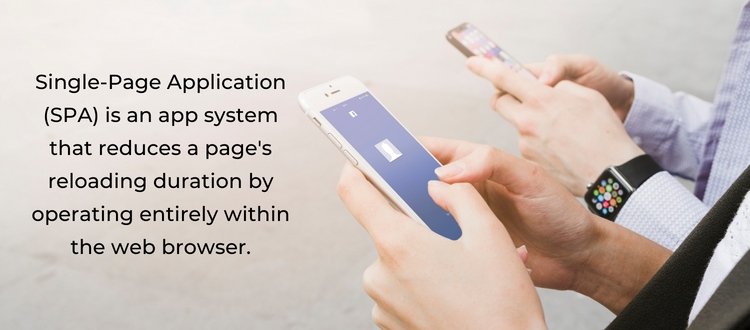

2023 will be a year brimming with opportunities, corporate success, expansion, and tremendous SEO ranking potential. We can expect more advanced technology to bring enhanced user experiences with cybersecurity in modern business anatomy.
Are you ready to morph your company into new shapes?
Let's explore the list of the ultimate web development trends that I believe will revolutionize the tech landscape in the near future.

AI, aka Artificial Intelligence, is the talk of the funnel when it comes to future technology. This cutting-edge technology is intermittently the highest priority. Some of the greatest and most renowned tech firms, including Google, Microsoft, and Facebook, have released their AI technologies for general public usage.
Besides, large-scale applications already deploy AI, whether it's to augment search engines such as Google or to find obsolete or corrupted entries on Wikipedia.
Isn't this ultimate?
Eventually, due to the massive digitization of recent businesses post-Covid period, companies have digitized their customer service through chatbots to cut operational costs and make customer service accessible 24/7. According to Business Insider, approx 40% of internet users worldwide prefer communicating with chatbots. Indeed, chatbots have their own advantages because, by 2023, their adoption might save the financial, commercial, and healthcare industries up to $11 billion yearly.
Leading companies like Facebook, Starbucks, LinkedIn, eBay, and British Airways are already introducing their customers to new means of interaction channels through chatbots. Therefore, their solutions become more practical and human-like.
For the upcoming future, it is likely that AI-based chatbots might go on to be one of the most trendy and prevalent trends in web development for the next few years.

Virtual reality, or VR, is another topic of discussion when discussing technology's future. And this dynamic trend is already overtaking the game business. The game industry has new and intriguing opportunities thanks to the PlayStation VR and Oculus Rift. And it won't go down there.
Google and Mozilla are two businesses that have started developing APIs to enable VR Technology to appear on the web. We anticipate that more and more apps will be created employing VR technologies with advanced guidelines.
I can predict the adaptation of virtual reality in the upcoming year in various contexts, from news reporting to virtual home tours.

The Internet of Things (IoT) is a network of interconnected devices that requires no human actions to conduct activities from users' perspectives and achieve positive outcomes.
From kettles to electric toasters and sensors to web development, nowadays, you can find this technology everywhere. Anyone with a Google Nest, Amazon Alexa, or Philips Hue light will understand what I'm talking about.
According to Statista, by 2025, there will be roughly 75 billion active Internet devices. In fact, healthcare, transportation, marketing, and housekeeping were the four main IoT areas in 2022. The adjustments in the IoT ecosystem also had an impact on new trends in web design (UX).
However, we can envision that businesses will face a growing demand for this technology that can aid in securing automated IoT engagements in the coming years.

The optimization of voice search is rapidly growing in all tech domains - web development is no exception. Although traditional search is still prominent, more users are reportedly choosing to speak to assistants instead of typing. As a result, we anticipate less text and more invoices will shortly be the direction of web development in the future.
Take the examples of multifunctional home assistants generated by computers like Siri, Alexa from Amazon, or Google Home, to highlight a few.
As reported in 2022, nearly half of all smart and IoT devices have received voice commands from users. Additionally, such tools have assisted businesses in recognizing various users' voices and providing a customized AI-based experience for everyone.
You may be intrigued about the potential effects of this technology on your business and the advantages of voice search website optimization. Below are the answers.
Voice search-optimized websites appear on top of SERPs (search engine result pages), which increases their potential to draw and keep users.
A voice search-friendly website offers faster responses to user queries than other websites. With this innovation, your website can render better search performance, higher user engagement, a more satisfying user experience, etc., as a positive outcome.
Voice search optimization can boost your website's SEO position; for example, search engines like Google prioritize voice search-friendly websites.
It increases the website visibility, traffic, and authority thanks to voice search optimization.

Approx 60% of internet traffic comes from smart gadgets like smartphones and tablets. Hence, businesses have realized an inevitable need for targetting mobile-like devices to generate more customers. If your company seeks to draw more user attention, there are three options for businesses to opt for:
Designing a mobile-responsive website
Develop a native app
Create a progressive web app (PWA)
Native apps are very effective but have a few limitations. But a progressive web app (PWA) doesn't require customers to download it from the Google play store or iPhone app store, and it works exactly like a native app.
Web app manifest
Application shell architecture
Server workers
Being on-demand and requiring little space for storage makes PWAs more effective
PWAs can function offline.
PWAs work flawlessly on mobile devices and adhere to the mobile-first ideology
A company can save up to 75% on production and implementation costs by using a PWA instead of developing a separate native app.
PWAs reduce server strain since they load approximately two to three times faster than typical apps.
PWAs are compatible with the mobile-first strategy and operate flawlessly on mobile devices.
In the coming times, this technology will augment a lot, as statistics indicate that by using PWAs significantly, companies can improve user engagement and experience extensively.
So, are you set to develop a progressive web application?

A single-page application (SPA) is an app system that reduces a page's reloading duration by operating entirely within the web browser. It is one of those pages that get accessed, after which all additional content gets loaded onto it with the aid of JavaScript.
These programs are simple to use and don't require users to wait. These are just a few instances of such a program: Google Maps, Gmail, and Facebook.
SPAs are JavaScript app programs that upload data and markup to generate dynamically on a single web page instead of loading individual HTML web pages from the server. It improves performance and dispenses any need for users to reload the website.
However, there are several things concerning single-page app development that you must be mindful of:
SPAs are recommended when an application needs to encompass rich functionality and a diverse UI
Instead of providing the logic in server-side format, single-page web apps extensively utilize web APIs to carry out most user interface logic.
Being familiar with JavaScript and TypeScript is necessary for a web development team

Smartphone utilization for web surfing is far more common and massive than laptops, tablets, and desktop PCs nowadays. As per the Drum reports, 65% of all e-commerce traffic comes from mobile devices. That is why a business would be more successful and can ensure a smooth user experience by making responsive web design.
Consequently, from 2023, we may anticipate a massive experiment and advancement in the design and functionality of web development, culminating in "smarter" websites that depart from conventional layouts, simple templates, and worn-out formats.
As of now, we have already spotted the beginning stages of this kind of technology in myriad outcomes based on the device type, customer's location, and other logged-in activities.
However, the web is all geared up to become even more user-friendly. For example, when a shopper approaches a physical store, the business can send a push notification or text message to their smartphone to notify them of a special offer or an invitation to visit their website, effortlessly fusing digital and offline marketing.
We'll undoubtedly witness a more individualized approach to a customer's UX in the upcoming years. Web designers can design bespoke, one-of-a-kind experiences using new technologies. In reality, customized layouts and content will terrifically replace the trend of cookie-cutter templates.
Web development is a diverse domain that involves extreme skills, knowledge, and proficiency of web designers, developers, and other associated techies. With the mentioned information, web engineers, marketers, and entrepreneurs may keep abreast of recent market trends.
Do you feel the need to adopt new web development trends beforehand? Let us know which technology you would like to give a shot as a vital tool to reshape your business website. If you feel there are a lot of other web development technologies that can be a trend in the coming times.
